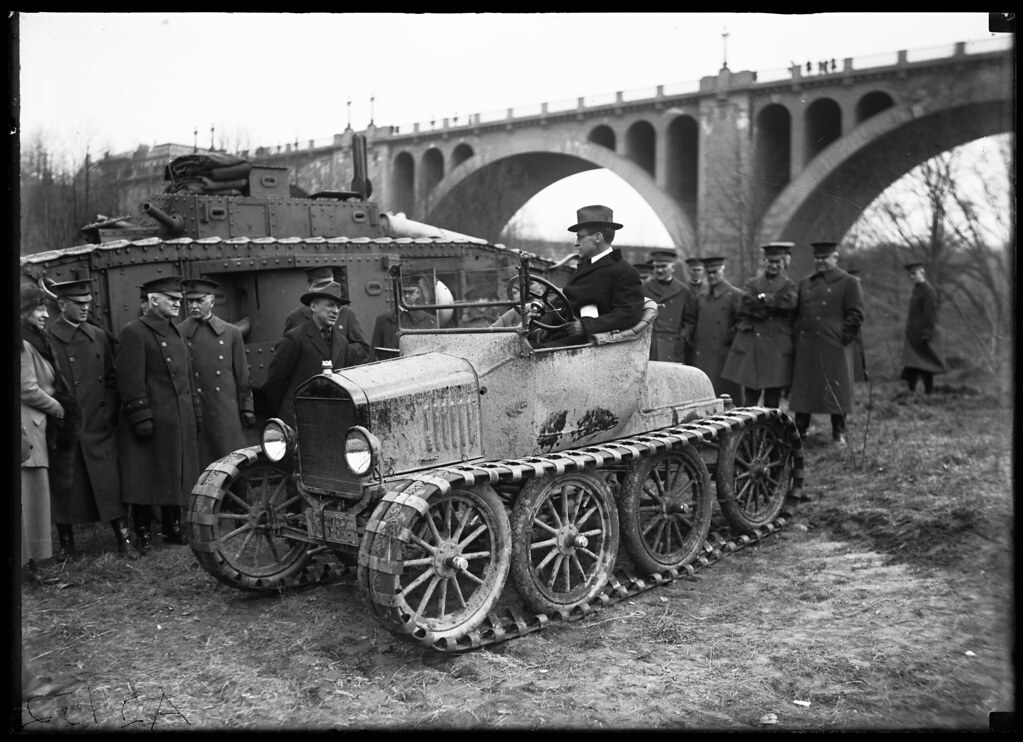
Incorrect original title to Harris & Ewing photo from the Library of Congress Prints & Photographs Online Catalog (PPOC). Click on pictures for larger images.
Updated April 3, 2015
On April 27, 2014 The Old Motor posted an article [since scrubbed and no longer available] provided by reader Tin Indian from the May 5, 1921 issue of Automobile Industries that identified for the general internet audience the tread system above as being the "Chase Track" invented by A. M. Chase. This has been not-so-common knowledge for some time, as some subscription sites have been discussing the tracks and the pictures for a few years now. As we will see, there is much more to the story. Interest in the picture above became wide-spread for the first time when Shorpy posted it on April 21, 2014.
The Library of Congress photos of the 1921 test of the Chase Track System have been making the internet rounds for a few years now, along with other photos taken from military journals. In a causal search, the earliest mention I can find is from July 2002 on the Cargo Carriers/Personal Carriers page of William A. Kirk Jr.'s TANKS! Armoured Warfare Prior to 1946 website, which had the most photos of vehicles with the Chase Track System outside of Fred W. Crismon's 1992 book U. S. Military Tracked Vehicles.
After a lull, some pictures showed up again around 2008, and then again with regularity starting in 2010, when many of the Ford oriented sites found them on the pages of my favorites such as Just a car guy, Jalopy Journal, Hemmings, and now Shorpy and The Old Motor (although I thought that The Old Motor had posted something earlier, but if so I can't find it now). The latter's post had more than anyone to that time—but in the interest of full disclosure, after my preliminary research I had uploaded most of what you see below to Shorpy a few days before The Old Motor post, but for some reason Shorpy didn't post it. It doesn't bother me, but those grapes were a bit off anyway.
As for the picture in the Shorpy post that has caused the recent surge of renewed interest, the 1917 Model-T Roadster in that particular photo has just emerged from the muddy banks of Rock Creek under the [William Howard] Taft Bridge at a location that is right about at today's junction of Rock Creek Parkway NW and Beach Drive NW (below). The Taft Bridge is often referred to as the Connecticut Avenue Bridge because it carries Connecticut Avenue traffic over Rock Creek, while the officially named Connecticut Avenue Bridge—an Art Deco steel-arch bridge located near the National Zoo—is more commonly known as the Kingle Valley Bridge because it carries Connecticut Avenue across that feature. Due to the information on the picture in the Library of Congress, the bridge had been identified as the [Francis Scott] Key Bridge, and that error was repeated over the years until Hemmings reader Tim identified it in October 2013, and then Shorpy reader, Washington D.C. radio personality, and D.C. history buff John Dowling was next to correctly identify the Taft Bridge on April 21, 2014.

When the original picture was taken the military nomenclature for the tracks was "Endless-Tread Attachment for Light Autos." Later it became known as the Chase Track, and today as the Chase Track System. Based on subsequent publicity, the photo was probably taken around early-January 1921. Seated behind the wheel is Secretary of War Newton Baker, who was decidedly not the test driver. The fellow standing on the ground (who "doesn't look convinced" in the Shorpy comments) is actually Aurin M. Chase—the inventor—positively identified through correspondence with his grandson, Doug Tomb. Mr Tomb is a car collector and the current President of the George Washington Chapter of the Model A Ford Club of America. In his collection he has four Chase vehicles, including the very one that was special built for A. M. Chase in 1911. Mr. Tomb tracked it down and brought it back into the family in 1994.
Chase graduated from M.I.T. in 1900 (it was still known as Boston Tech then) as a mechanical engineer and joined the family firm, the Syracuse Chilled Plow Company.
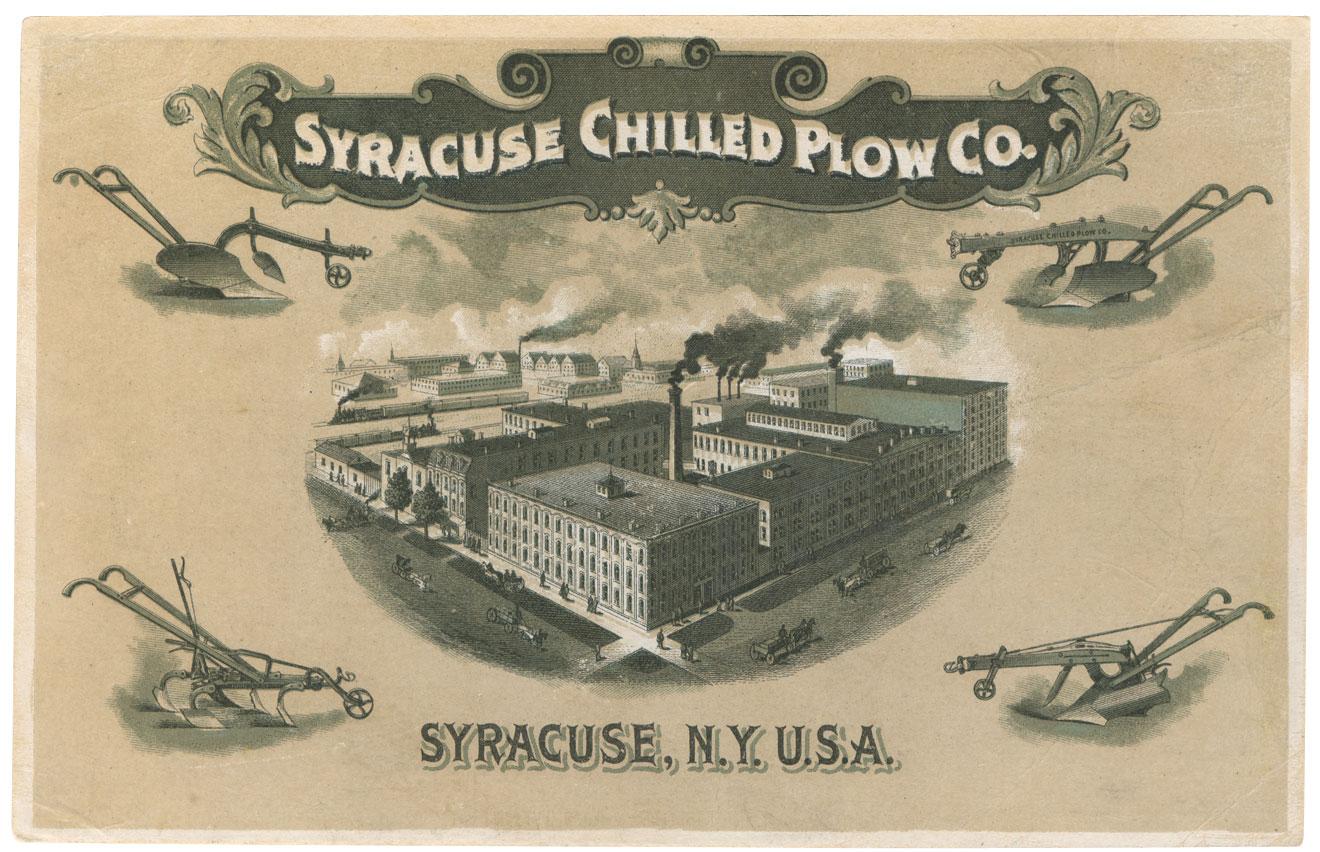
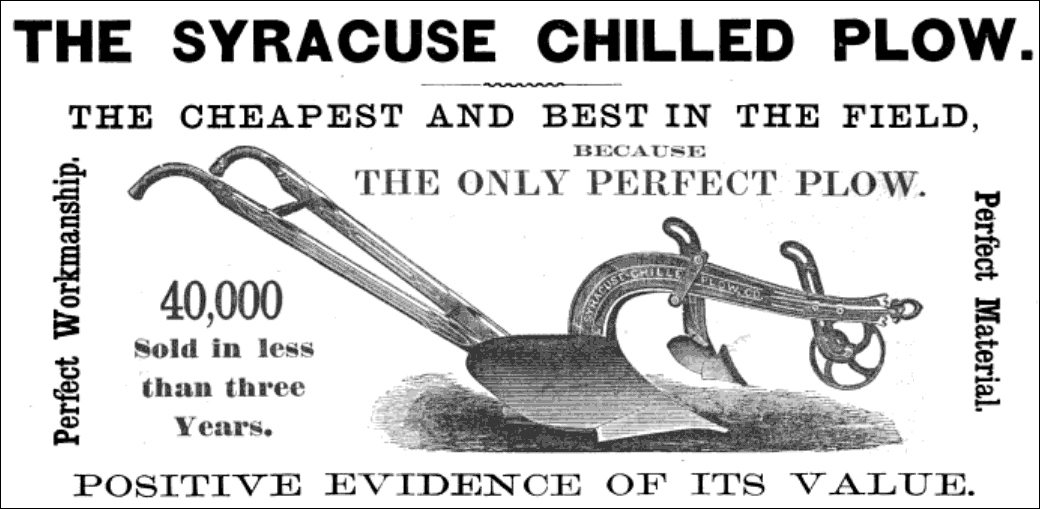
A few years later he was at the Franklin Automobile Company, where he designed the flywheel suction fan for their air-cooled engines. In 1907 he started the Chase Motor Truck Company to build commercial grade motor trucks that were powered by three-cylinder two-cycle, air-cooled engines of his own design (and incorporating the same fan as the Franklin—he had kept the rights to it):

And light duty trucks with a two-cylinder engine:
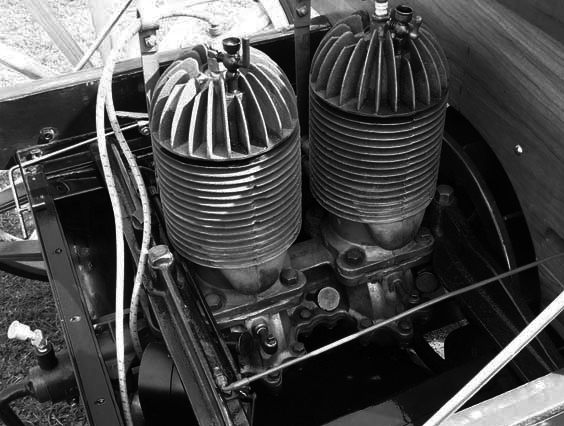
Later they switched to Continental engines and by 1917 one out of twelve trucks in New York was a Chase.
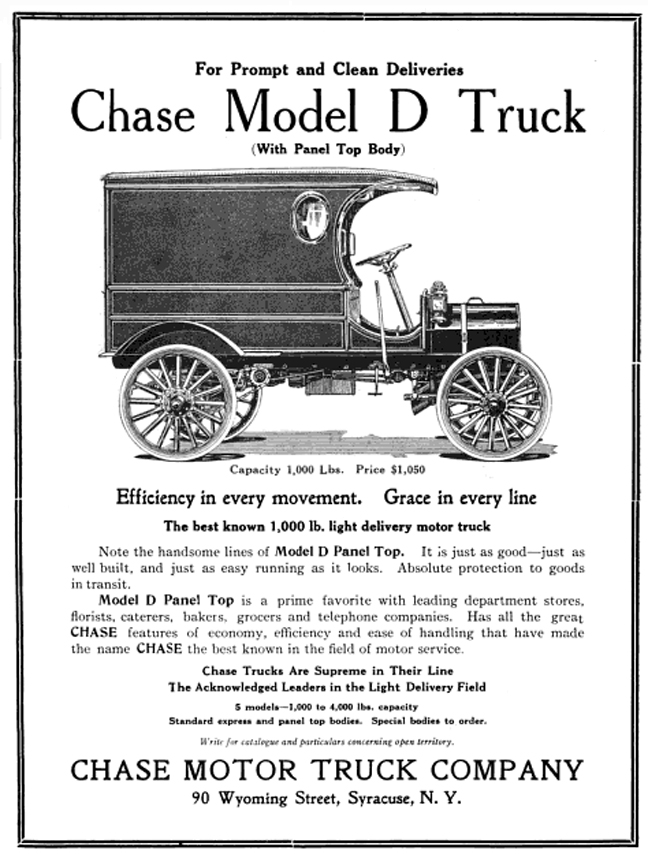
In 1909 the company added cars to the lineup, and from September of that year until 1912 they teamed with Brockway Carriage Works to help build the first Brockway trucks. In 1911 Chase added tractors.
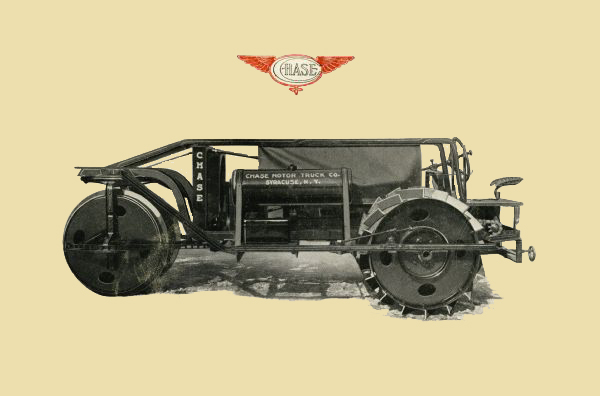
In late 1919 the company was sold to a Canadian concern and moved to Toronto where tractor production continued for a few more years.
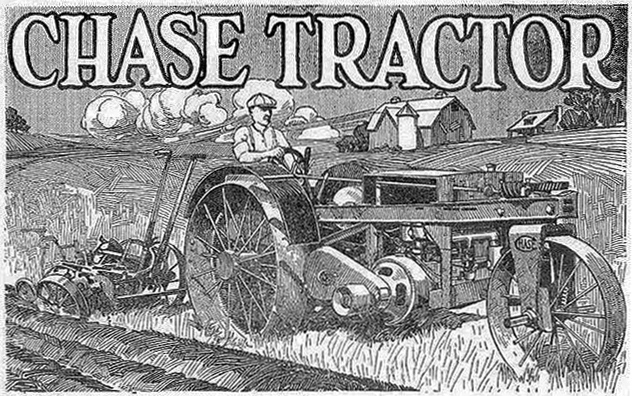
A. M. Chase himself, however, had moved on. In early 1916 he was the Chief of the Truck and Trailer Unit of the Ordnance Department in Washington, D. C. In January 1918 he was mustered into the Ordnance Reserve Corps of the U.S. Army as a Major. While in Washington he designed and supervised the production of field-artillery tractors, scout cars, mobile machine shops, and trucks with special bodies for carrying munitions, guns, and range-finding instruments.
In June 1918 he was stationed in Tours, France with the A. E.F. serving as Chief of the Motor Equipment Section with a staff of eighty-five officers designing emergency equipment in the field and supervising production of equipment in France. He also organized schools in the use of the new equipment.
In March 1919 he was promoted to Lieutenant-Colonel. He returned to the states at the end of May and mustered out a month later. It was said that, in large part, it was due to Chase that at the end of war the American Army was more mechanized than any other. He didn't really leave the service however, as his next job was to serve as the District Designing Engineer of the Ordnance Department back in Syracuse (hence the 1920 New York license plate on the Model-T when you invert and flip the photo).

While there, and in response to requests for various new vehicles, he began the designs that would lead to the Chase Track system of fabric belts connected by metal links, for light vehicles.
One of the first requests was for a Tractor Hand Cart that reconnaissance scouts could use to pull equipment and supplies over difficult terrain. The Syracuse Tractor Hand Cart—the first vehicle to utilize the Chase Track—was the result.

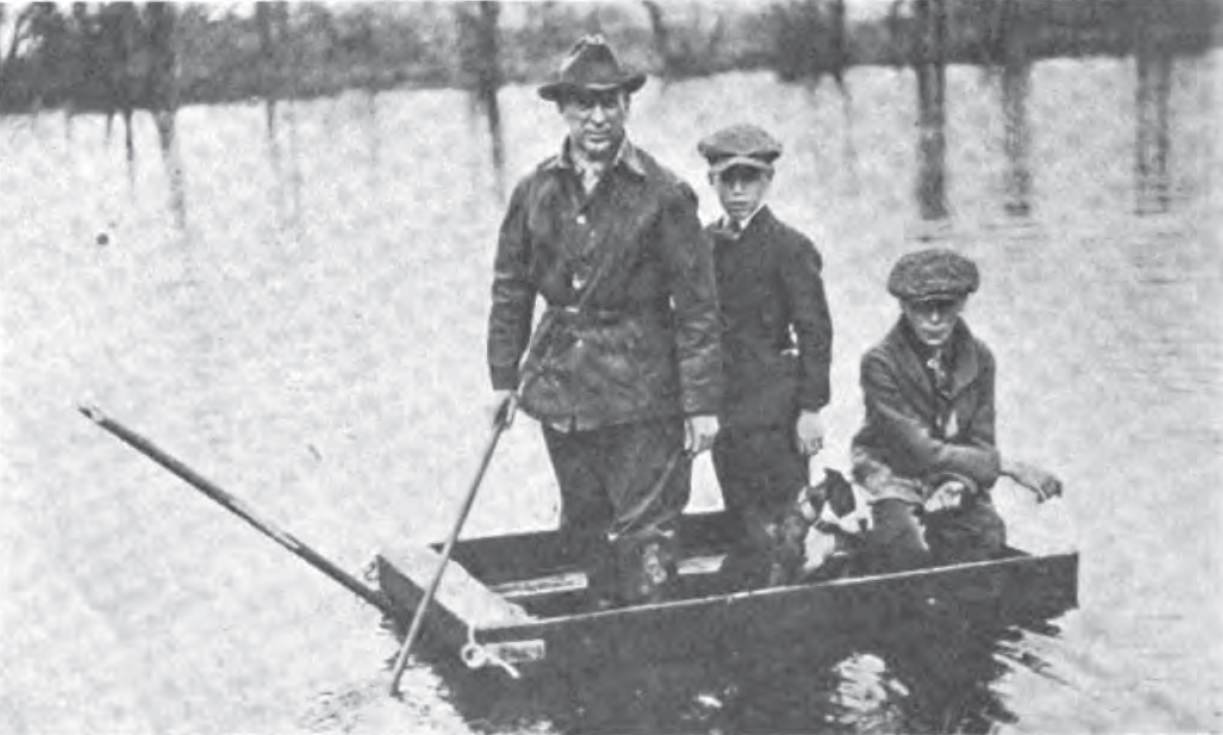
That's Aurin M. Chase pulling the Hand Cart in the upper picture, and standing in it while it's afloat in the lower picture.
Then, in order to carry both the equipment and the reconnaissance scouts themselves, the Syracuse Reconnaissance Tractor came along.
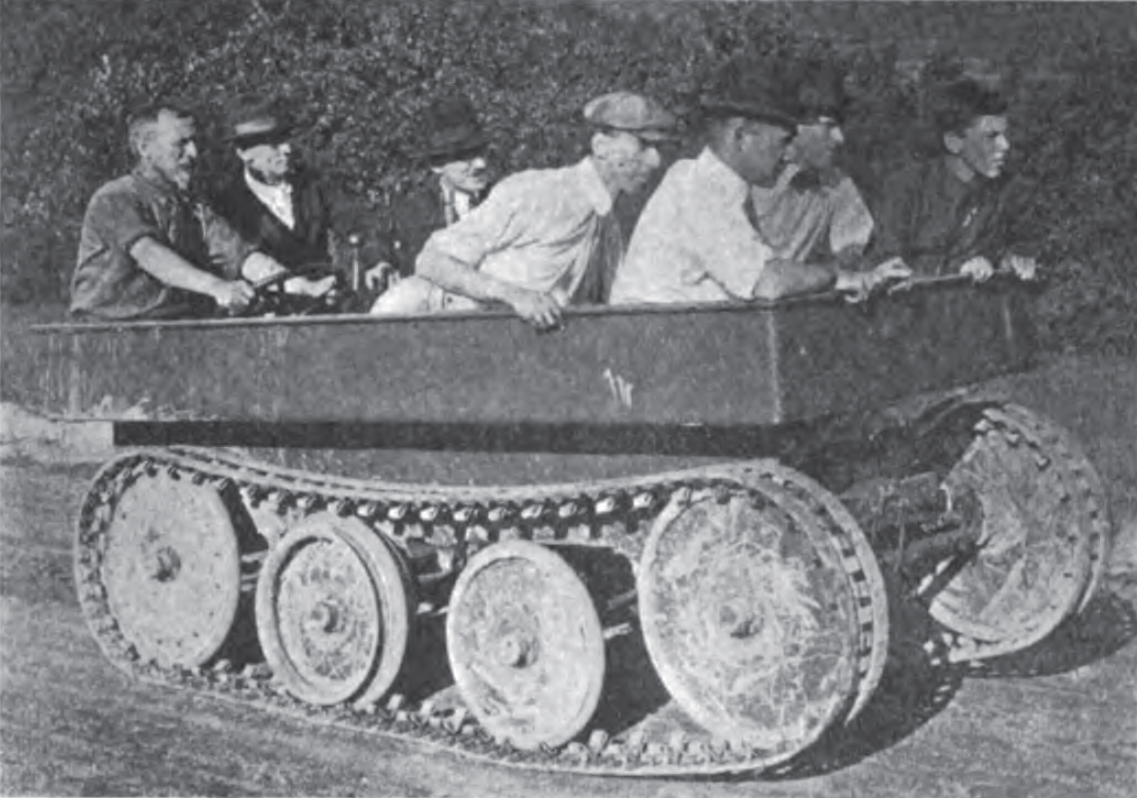
Next the idea was applied to a regular vehicle, albeit one with a special axle, extra wheels, and extra large rear brakes for steering.
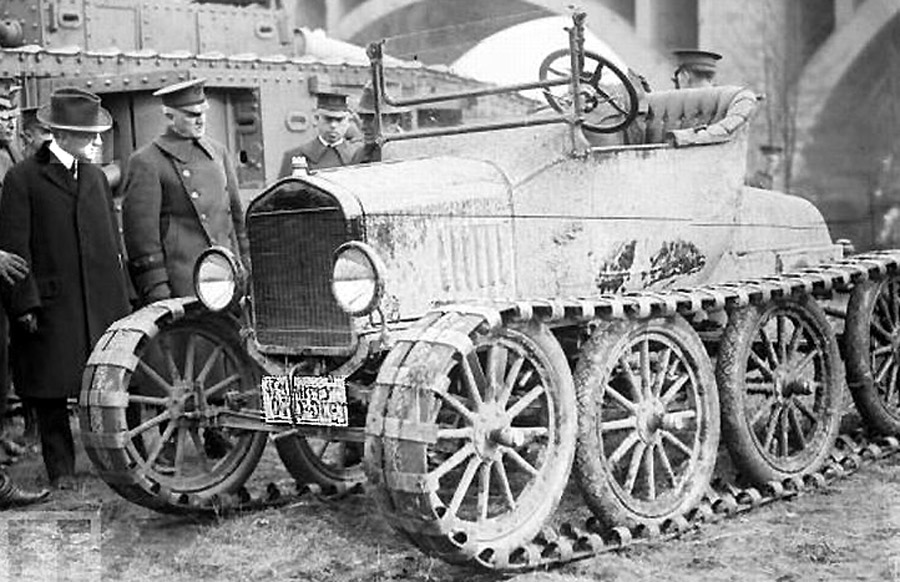
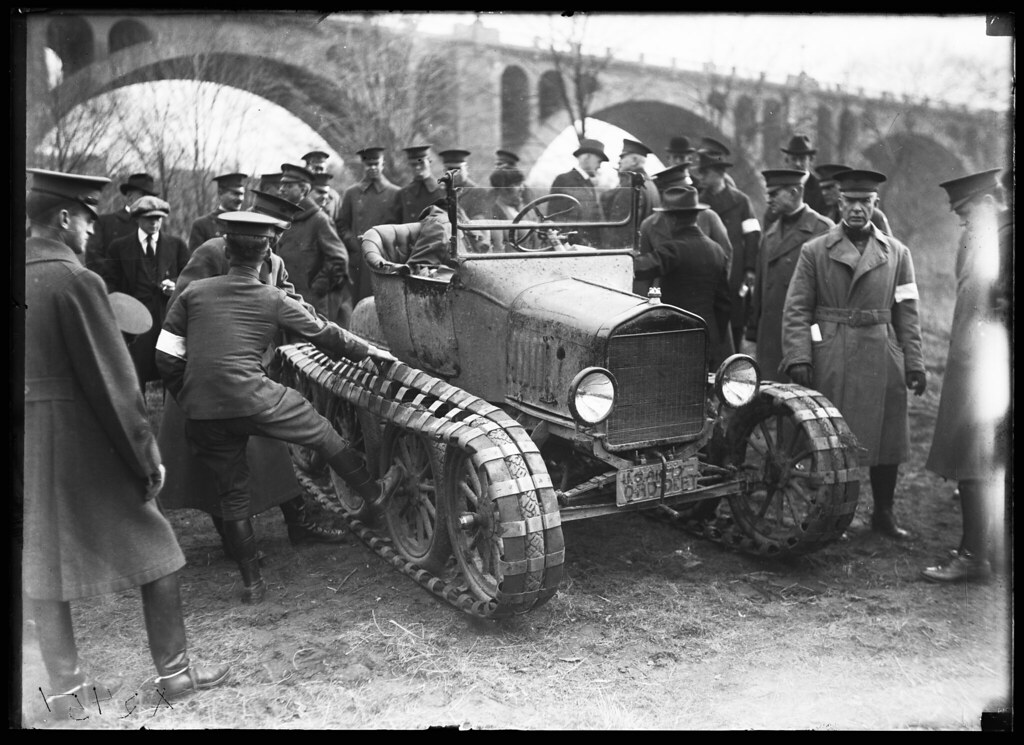
In the Spring of 1921 the Rock Creek trial was featured in a number of popular journals including the above-mentioned May 5, 1921 issue of Automobile Industries, the April issue of Popular Mechanics, the May issue of Illustrated World, and more—not to mention being written up in newspapers across the country.
Chase received two patents for the system.
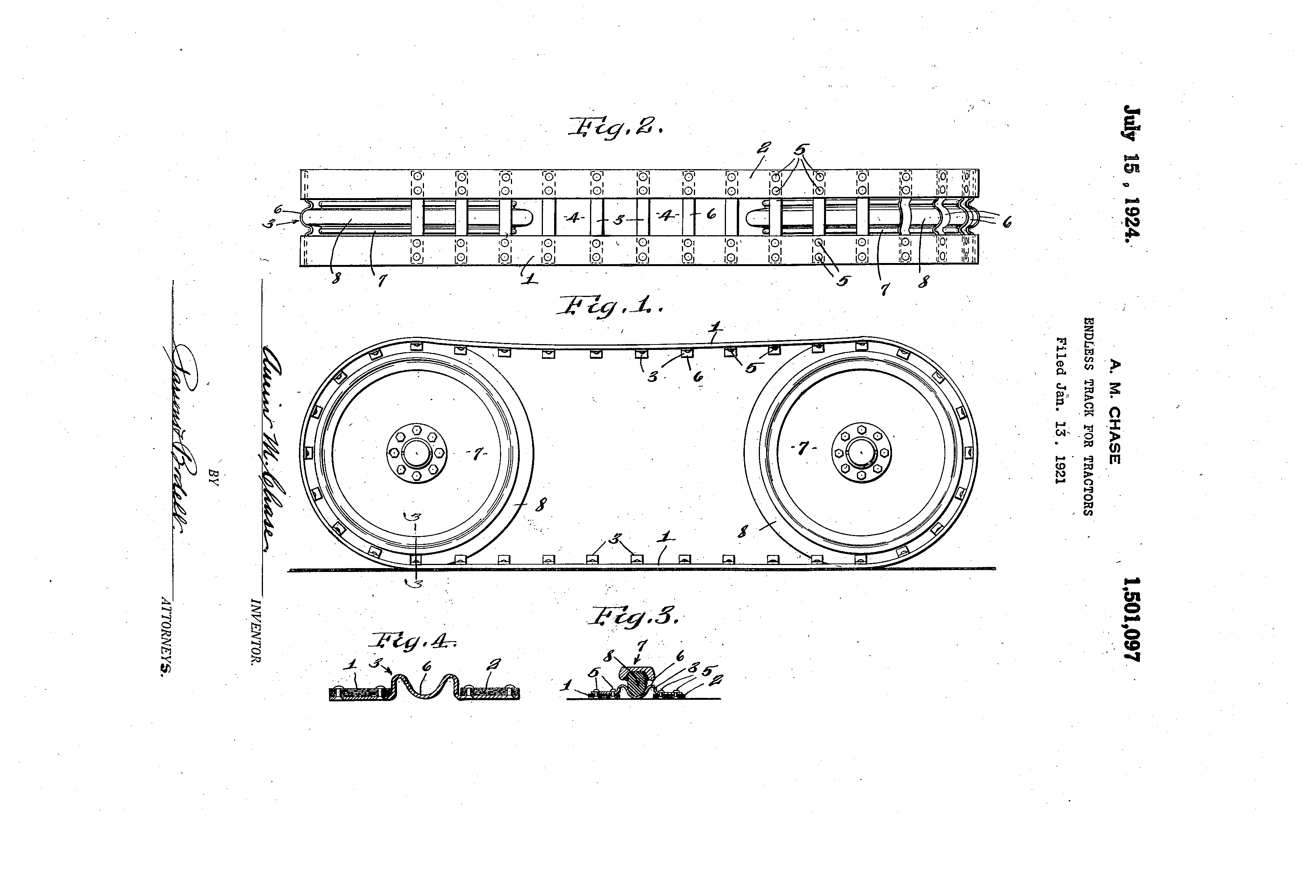
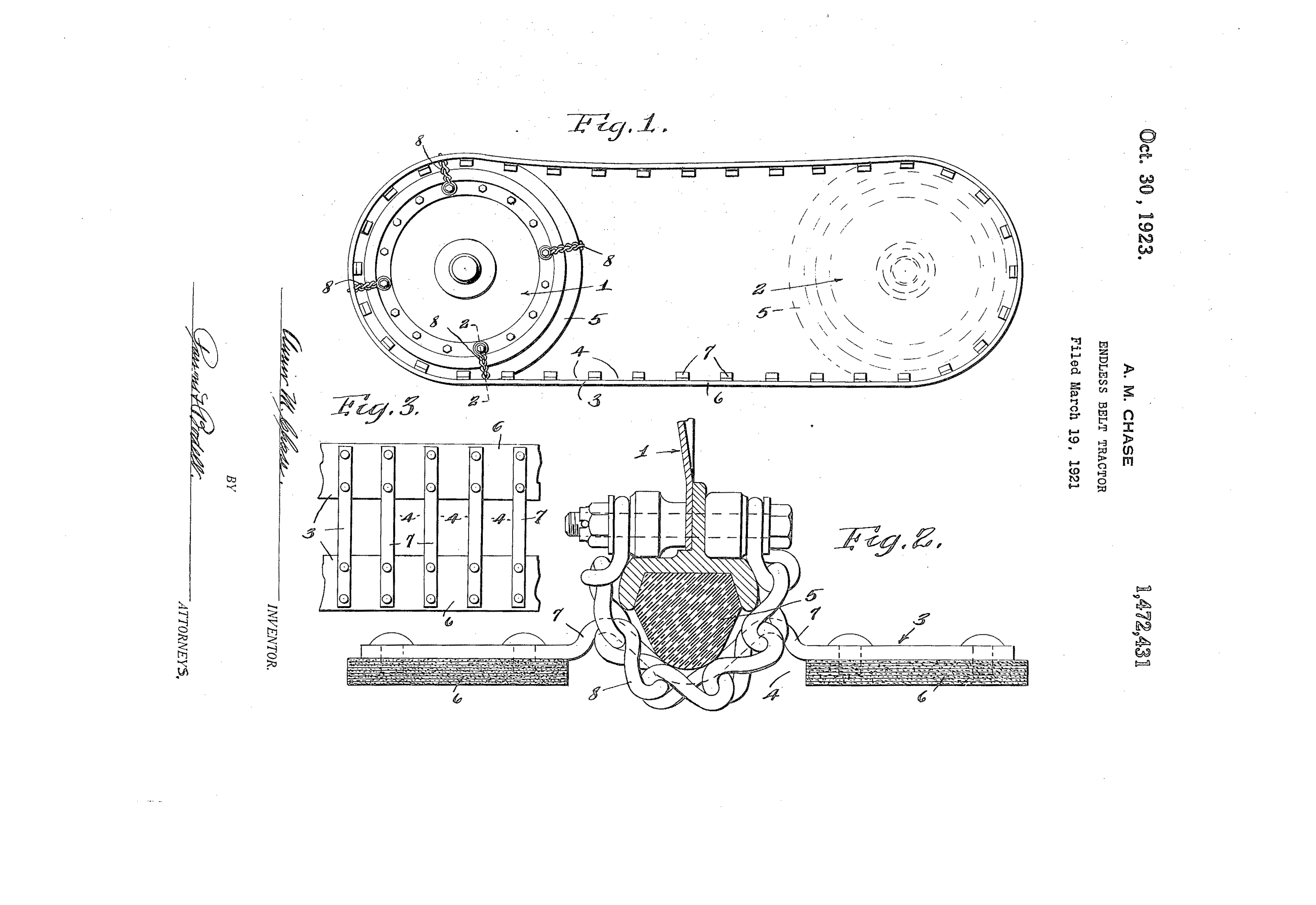
The steering wheel was retained because the tracks could be removed, reverting the vehicle back into an ordinary one. And, on a Model-T, the throttle and spark lever are mounted on the steering wheel.
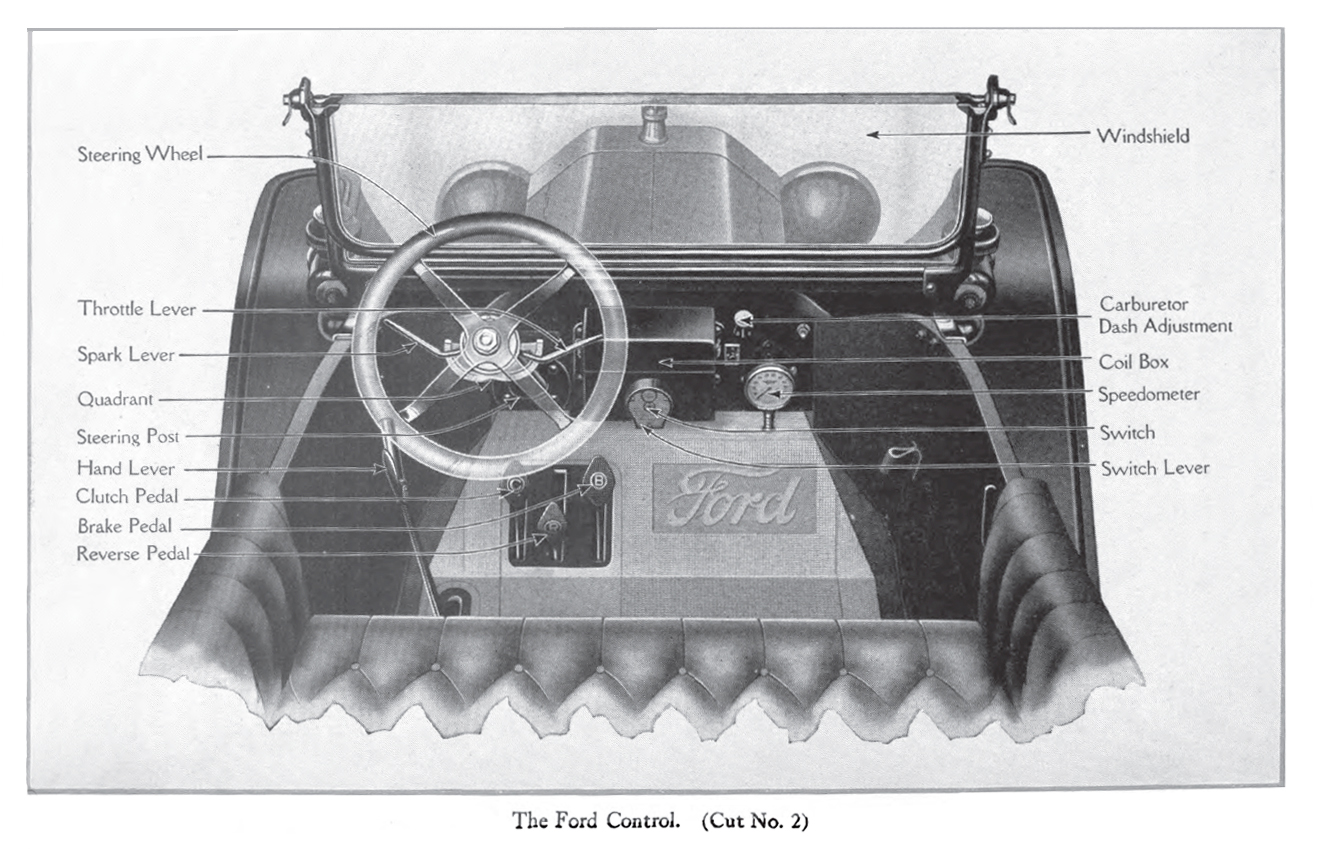
Below A. M. Chase is running more trials on May 17, 1921, and has the turtle-deck removed from the back.


Below - The system was later applied to the Dodge Light Repair Truck (Chase to the left wearing the 1898 Field Hat) :
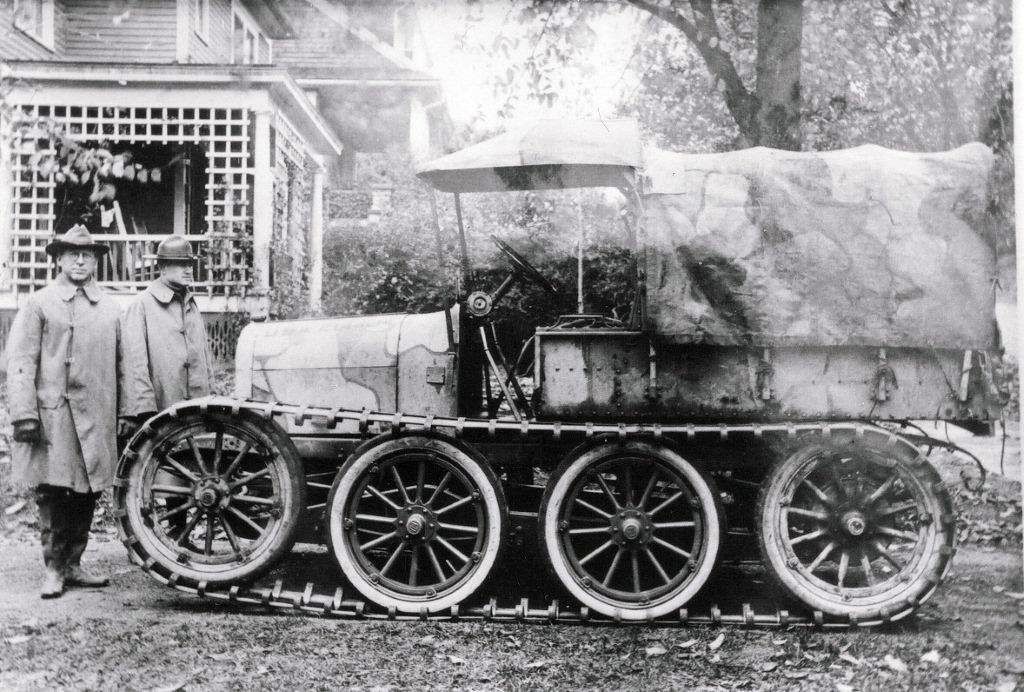
And even the 3-ton Militor, seen here at Aberdeen Proving Ground in 1922. It could hit a whopping 13 mph.
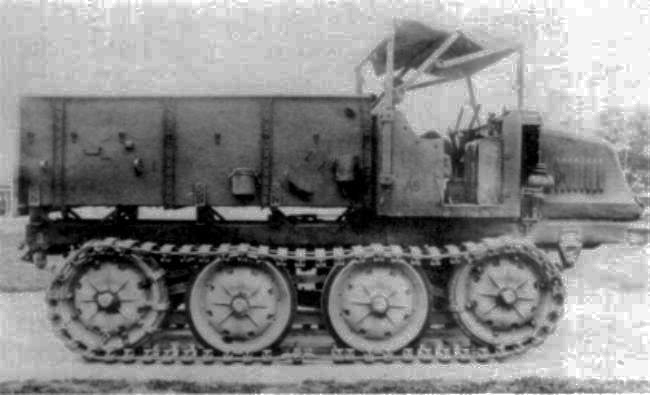
Testing continued for years and despite improvements, technology eventually surpassed the Chase Track, and while it never was approved for production for the U. S. Army, it did see some civilian applications. Other countries did adopt versions of the system, and at the start of WWII at least two foreign armies were still using the Chase Track System.
More will be posted about Chase, his academic and professional careers, family, and the Syracuse Chilled Plow Company. Check back for updates.
1 comment:
Just followed a link from TOM. Bookmarked this site.
I'll be back.
Post a Comment